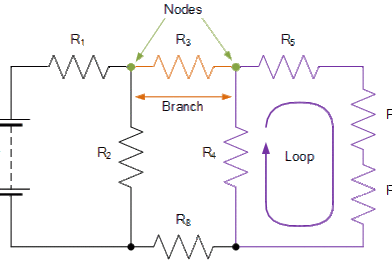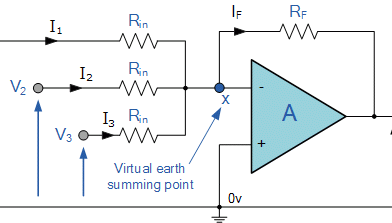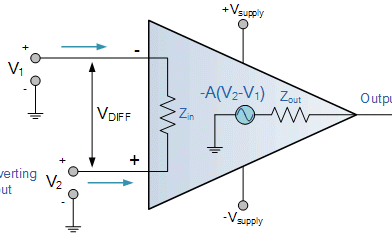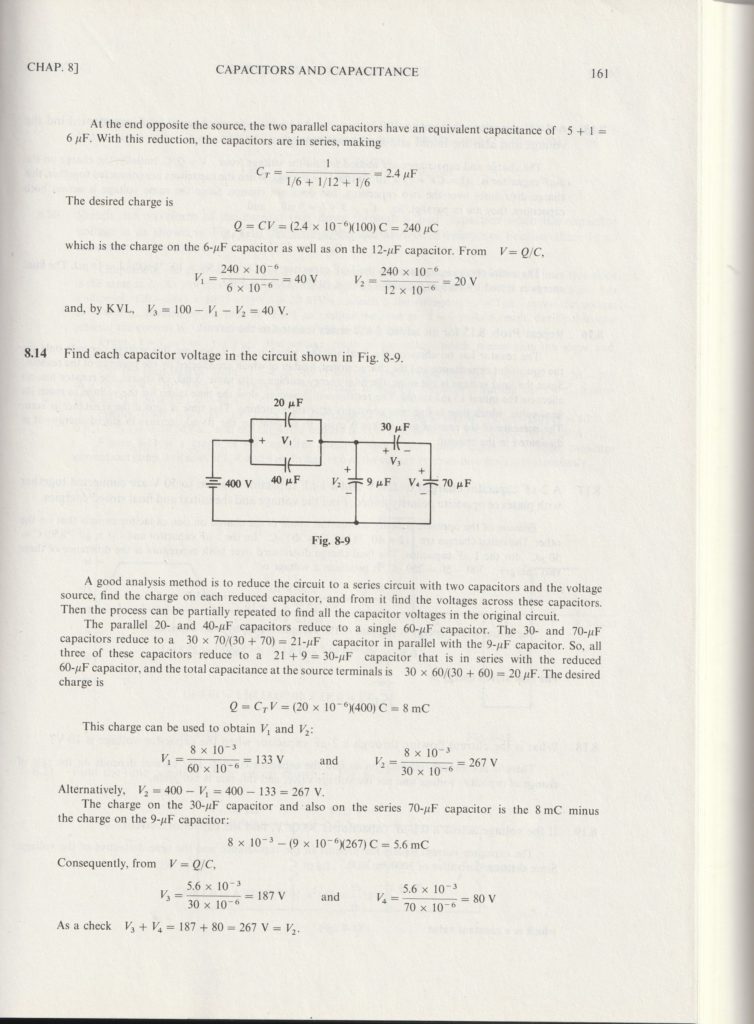Kirchhoffs First Law – The Current Law, (KCL)
Kirchhoffs Current Law or KCL, states that the “total current or charge entering a junction or node is exactly equal to the charge leaving the node as it has no other place to go except to leave, as no charge is lost within the node“. In other words the algebraic sum of ALL the currents entering and leaving a node must be equal to zero, I(exiting) + I(entering) = 0. This idea by Kirchhoff is commonly known as the Conservation of Charge.
Kirchhoffs Current Law

Here, the three currents entering the node, I1, I2, I3 are all positive in value and the two currents leaving the node, I4 and I5 are negative in value. Then this means we can also rewrite the equation as;
I1 + I2 + I3 – I4 – I5 = 0
The term Node in an electrical circuit generally refers to a connection or junction of two or more current carrying paths or elements such as cables and components. Also for current to flow either in or out of a node a closed circuit path must exist. We can use Kirchhoff’s current law when analysing parallel circuits.
Kirchhoffs Second Law – The Voltage Law, (KVL)
Kirchhoffs Voltage Law or KVL, states that “in any closed loop network, the total voltage around the loop is equal to the sum of all the voltage drops within the same loop” which is also equal to zero. In other words the algebraic sum of all voltages within the loop must be equal to zero. This idea by Kirchhoff is known as the Conservation of Energy.
Kirchhoffs Voltage Law

Starting at any point in the loop continue in the same direction noting the direction of all the voltage drops, either positive or negative, and returning back to the same starting point. It is important to maintain the same direction either clockwise or anti-clockwise or the final voltage sum will not be equal to zero. We can use Kirchhoff’s voltage law when analysing series circuits.
When analysing either DC circuits or AC circuits using Kirchhoffs Circuit Laws a number of definitions and terminologies are used to describe the parts of the circuit being analysed such as: node, paths, branches, loops and meshes. These terms are used frequently in circuit analysis so it is important to understand them.
Common DC Circuit Theory Terms:
- • Circuit – a circuit is a closed loop conducting path in which an electrical current flows.
- • Path – a single line of connecting elements or sources.
- • Node – a node is a junction, connection or terminal within a circuit were two or more circuit elements are connected or joined together giving a connection point between two or more branches. A node is indicated by a dot.
- • Branch – a branch is a single or group of components such as resistors or a source which are connected between two nodes.
- • Loop – a loop is a simple closed path in a circuit in which no circuit element or node is encountered more than once.
- • Mesh – a mesh is a single open loop that does not have a closed path. There are no components inside a mesh.
Note that:
Components are said to be connected together in Series if the same current value flows through all the components.
Components are said to be connected together in Parallel if they have the same voltage applied across them.
A Typical DC Circuit

Kirchhoffs Circuit Law Example No1
Find the current flowing in the 40Ω Resistor, R3

The circuit has 3 branches, 2 nodes (A and B) and 2 independent loops.
Using Kirchhoffs Current Law, KCL the equations are given as:
At node A : I1 + I2 = I3
At node B : I3 = I1 + I2
Using Kirchhoffs Voltage Law, KVL the equations are given as:
Loop 1 is given as : 10 = R1 I1 + R3 I3 = 10I1 + 40I3
Loop 2 is given as : 20 = R2 I2 + R3 I3 = 20I2 + 40I3
Loop 3 is given as : 10 – 20 = 10I1 – 20I2
As I3 is the sum of I1 + I2 we can rewrite the equations as;
Eq. No 1 : 10 = 10I1 + 40(I1 + I2) = 50I1 + 40I2
Eq. No 2 : 20 = 20I2 + 40(I1 + I2) = 40I1 + 60I2
We now have two “Simultaneous Equations” that can be reduced to give us the values of I1 and I2
Substitution of I1 in terms of I2 gives us the value of I1 as -0.143 Amps
Substitution of I2 in terms of I1 gives us the value of I2 as +0.429 Amps
As : I3 = I1 + I2
The current flowing in resistor R3 is given as : -0.143 + 0.429 = 0.286 Amps
and the voltage across the resistor R3 is given as : 0.286 x 40 = 11.44 volts
The negative sign for I1 means that the direction of current flow initially chosen was wrong, but never the less still valid. In fact, the 20v battery is charging the 10v battery.
Application of Kirchhoffs Circuit Laws
These two laws enable the Currents and Voltages in a circuit to be found, ie, the circuit is said to be “Analysed”, and the basic procedure for using Kirchhoff’s Circuit Laws is as follows:
- 1. Assume all voltages and resistances are given. ( If not label them V1, V2,… R1, R2, etc. )
- 2. Label each branch with a branch current. ( I1, I2, I3 etc. )
- 3. Find Kirchhoff’s first law equations for each node.
- 4. Find Kirchhoff’s second law equations for each of the independent loops of the circuit.
- 5. Use Linear simultaneous equations as required to find the unknown currents.
As well as using Kirchhoffs Circuit Law to calculate the various voltages and currents circulating around a linear circuit, we can also use loop analysis to calculate the currents in each independent loop which helps to reduce the amount of mathematics required by using just Kirchhoff’s laws. In the next tutorial about DC circuits, we will look at Mesh Current Analysis to do just that.










































































